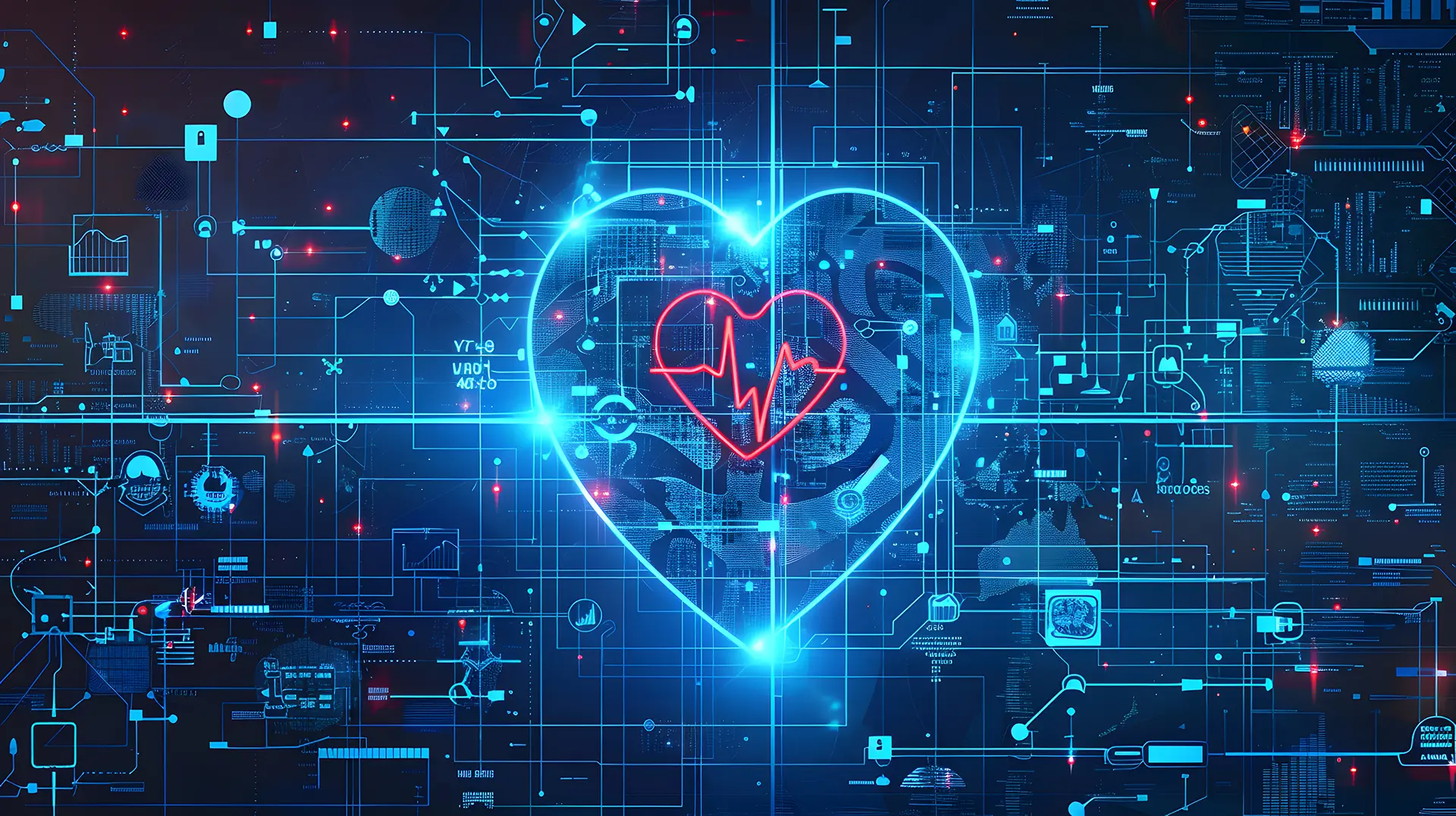Table of contents
- What is telemedicine
- Importance of data security and privacy in telemedicine
- Protecting sensitive data
- Authentication and authorization
- Regulatory framework and guidelines
- Training and awareness for healthcare professionals
- Continuous monitoring and system updates
- Governance and responsibility
- Global and national regulations
- Challenges and solutions
- Safe and high-quality healthcare
What is telemedicine
Telemedicine is the use of information and communication technologies (ICT) to provide remote healthcare services. This practice allows healthcare professionals to diagnose, treat, and monitor patients without the need for a physical meeting. While telemedicine does not completely replace traditional healthcare, it offers a valuable alternative, especially in situations where access to healthcare services is limited.
Privacy and security in telemedicine
Data security in telemedicine is a primary concern. Sensitive patient data, including personal and medical information, must be protected from unauthorized access and potential breaches. Healthcare facilities and professionals must adopt rigorous measures to ensure the security of sensitive data during the processing of personal information. This involves the use of advanced technologies and adherence to data management practices that comply with current regulations.
Protecting sensitive data
Protecting sensitive data is fundamental to maintaining patient trust in telemedicine services. This data includes:
- Information on diagnoses
- Treatments
- Medical history
- Other personal information that can identify an individual
Data encryption is one of the main techniques used to protect this data. Data encryption involves transforming information into an unreadable format for anyone without the appropriate decryption key. This ensures that only authorized individuals can access sensitive information.
Authentication and authorization
Authentication and authorization are crucial processes in telemedicine security. Authentication verifies the identity of users accessing telemedicine systems, while authorization determines these users’ access rights and privileges. Advanced authentication techniques, such as two-factor authentication (2FA), can significantly enhance security.
Strong authentication requires users to provide two forms of identification before accessing data. Additionally, access to data should be limited to those who need it to perform their functions, reducing the risk of breaches.
Regulatory framework and guidelines
Regulations and guidelines play a crucial role in defining security standards for telemedicine. The general data protection regulation (GDPR) of the European Union sets strict requirements for the protection of personal data, including that processed in telemedicine services. Healthcare facilities must ensure compliance with these regulations to avoid penalties and ensure the security and privacy of patients. In addition to the GDPR, other local guidelines and regulations may apply, requiring thorough knowledge and consistent application of the rules.
Training and awareness for healthcare professionals
Training and awareness of healthcare professionals are fundamental elements for ensuring data security in telemedicine. Healthcare professionals must be educated on best practices in IT security and sensitive data management. This includes understanding encryption techniques, authentication and authorization procedures, and relevant regulations. Continuous training helps maintain a high level of security awareness, reducing the risk of human error that can lead to data breaches.
Continuous monitoring and system updates
Continuous monitoring and regular updates of telemedicine systems are crucial for maintaining a high level of security. Cyber threats are constantly evolving, and healthcare facilities must proactively recognize and mitigate these risks. Security monitoring tools can detect suspicious activities and potential breaches in real-time, allowing for rapid intervention. Additionally, regularly updating software and network infrastructure helps close vulnerabilities that attackers could exploit.
Governance and responsibility
Governance of telemedicine security requires a structured and responsible approach. Healthcare facilities must establish clear policies and procedures for data security management, defining specific roles and responsibilities. This includes:
- Appointing a Data Protection Officer (DPO)
- Creating security committees
- Conducting periodic audits to assess the effectiveness of security measures
Solid governance ensures that data security is a constant priority and well-integrated into daily operations.

Global and national regulations
Security and privacy in telemedicine are governed by a series of regulations and guidelines that vary globally and nationally. These regulations are essential to ensure that telemedicine services are safe, effective, and compliant with legal standards. Healthcare facilities, professionals, and operators must be well-informed about these regulations to ensure the proper management of patients’ sensitive data.
- General data protection regulation (GDPR)
The GDPR is one of the most important international regulations issued by the European Union. Enacted in May 2018 for all member states, the GDPR sets strict rules for the protection of personal data. The GDPR applies to all organizations that process EU citizens’ data, regardless of their geographic location.
In telemedicine, the GDPR requires that patients’ personal data be processed lawfully, fairly, and transparently. Healthcare facilities must ensure that data is collected for specific, explicit, and legitimate purposes and not further processed in a manner incompatible with those purposes.
- Health insurance portability and accountability act (HIPAA)
In the United States, HIPAA is the primary regulation governing healthcare data protection. This law requires that protected health information (PHI) be handled with the utmost confidentiality and security. Healthcare facilities must implement physical, technical, and administrative measures to protect patients’ sensitive data. HIPAA also establishes specific rights for patients, such as the right to access their health data and request corrections in case of errors.
- World Health Organization (WHO) guidelines
The WHO has developed a series of guidelines for telemedicine use aimed at promoting safe and effective practices worldwide. These guidelines include recommendations on ensuring the quality of telemedicine services, protecting patient privacy, and ensuring data security. The WHO emphasizes the importance of robust technology systems and adequately trained healthcare professionals to manage telemedicine technologies.
- National regulations
In addition to international regulations, many countries have developed specific national regulations for telemedicine. For example, in Italy, the Ministry of Health has issued guidelines for telemedicine, establishing criteria and requirements for delivering telemedicine services, ensuring they meet security and quality standards. These guidelines include provisions on personal data protection, communication security, and training for healthcare professionals.
- Certifications and international standards
Certifications and international standards provide a framework for data protection in telemedicine. These certifications help healthcare organizations implement information security management systems that adhere to global best practices. Adhering to such standards can enhance patient trust and ensure compliance with current regulations.
- Documentation and traceability requirements ù
Telemedicine regulations often include specific documentation and traceability requirements. This means that healthcare facilities must maintain accurate records of telemedicine consultations, including details on communications and clinical decisions made. Traceability is essential for ensuring transparency and accountability, as well as providing evidence in case of disputes or investigations.
- Impact of compliance on healthcare facilities
Compliance with regulations and guidelines requires significant commitment from healthcare facilities. This may involve investments in advanced technologies, continuous training for healthcare professionals, and the implementation of detailed policies and procedures for data security management. However, meeting these requirements is crucial to protecting patients and ensuring the quality of telemedicine services.
Challenges and solutions
Despite the benefits of telemedicine, there are several challenges related to data security and privacy. Cyber attacks, such as hacking and phishing, pose a significant threat to data security in telemedicine. To counter these threats, healthcare facilities must implement advanced security measures such as:
- Data encryption
- Two-factor authentication
- Continuous system monitoring
Role of healthcare professionals
Healthcare professionals play a crucial role in protecting privacy and security in telemedicine. They must be adequately trained on best practices for managing sensitive data and the importance of IT security. Additionally, healthcare staff must be aware of current regulations and specific guidelines for telemedicine.
Safe and high-quality healthcare
Security in telemedicine is essential to ensure that patients can benefit from these innovative services without compromising their privacy. Healthcare facilities, professionals, and operators must collaborate to implement effective security measures and rigorously follow guidelines and regulations. Only by doing so can we fully exploit the potential of new technologies in digital healthcare, offering safe and high-quality healthcare services.
